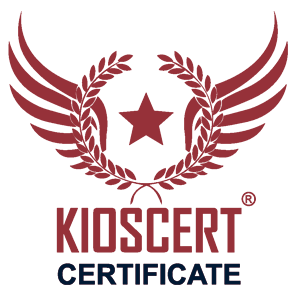
How Are Customer Complaints Managed?
Effective management of customer complaints is not just about solving problems; it also means strengthening customer loyalty, enhancing brand trust, and building long-term relationships. The ISO 10002 standard aims to transform complaint management from random approaches into a systematic, measurable, and traceable process.
The complaint management process begins with recording the feedback received from the customer. Then, this feedback is classified, prioritized, and handled by authorized personnel. Each complaint resolution process must be completed within a designated time frame and the customer should be informed. Principles such as empathy, transparency, impartiality, and confidentiality should be followed throughout this process.
Steps for Effective Complaint Management
- Quickly receiving feedback
- A transparent evaluation process
- Confirming customer satisfaction after resolution
- Continuous improvement contribution from feedback
Basic Principles of ISO 10002
The ISO 10002 standard provides the fundamental principles necessary for establishing and implementing a customer satisfaction-focused management system. These principles enable the creation of a fair, objective, and improvable structure for both the customer and the business. The most fundamental principles include accessibility, responsiveness, objectivity, confidentiality, accountability, and continual improvement.
The framework provided by ISO 10002 aims not only to resolve complaints but also to extract meaningful lessons from them to prevent future issues. This approach strengthens and sustains the relationship with the customer. Moreover, the involvement of all employees in the system supports transparency in internal communication and a culture of participation.
Establishment of a Transparent Feedback System
Whether an organization is customer-oriented is most clearly understood through its feedback mechanisms. Transparent feedback systems established within the ISO 10002 framework include structures where customers can easily communicate their problems, have their requests considered, and the resolution processes are transparently monitored. This system should be designed holistically to include not only complaints but also suggestions and satisfaction feedback.
Feedback channels can be diversified, including web forms, call centers, email addresses, mobile applications, and social media platforms. However, it is crucial that these channels are easily accessible, understandable, and reliable from the customer's perspective. Recording all feedback, informing the customer throughout the process, and clearly presenting the solution are fundamental components of transparency.
Practices to Ensure Transparency
- Visual diagrams explaining the feedback process
- Automatic email and SMS notifications to customers
- Individual tracking number for each feedback
- Result-oriented and guaranteed response approaches
Customer Role in the Continuous Improvement Cycle
One of the prominent features of ISO 10002 is that complaints are not only resolved but also contribute to systematic improvement processes. In this context, the customer’s role transforms from merely a complainant to a strategic element that contributes to the development of the business. Customer feedback, when analyzed with root cause analysis, helps identify weak links in the system.
In the continuous improvement cycle, every complaint must be recorded, analyzed, and preventive measures developed to avoid recurrence of the same problem. This process is a shared responsibility of not only the quality department but all departments. Transforming customer data into meaningful insights enhances the organization’s agile decision-making ability and strengthens its market position.
"When a customer complains, they give you a second chance before leaving." Organizations that act with this philosophy manage change thanks to the customer.
Path Followed in the Certification Process
The ISO 10002 certification process aims to systematically demonstrate how much an organization values customer satisfaction. The first step in this process is a detailed analysis of the existing complaint management system. Existing procedures, record systems, response times, and resolution quality are evaluated. Then documentation revisions are made to establish a compliant structure.
Internal audits, risk analyses, and corrective actions are essential parts of the pre-certification stages. The certification audit is conducted based on the operation of this structure, the accuracy of records, and the principle of solution orientation. Institutions that earn the certification gain significant reputation by proving they provide transparent and reliable service to both customers and business partners.
Corporate Customer Satisfaction Standard with KIOSCERT
Organizations need an internationally recognized framework to systematize customer satisfaction and turn complaints into opportunities. In this regard, ISO 10002 provides a solid structure for businesses. The competence of the certification body is decisive for the secure and accurate implementation of the process. KIOSCERT offers reliable solutions to organizations with its sector experience and transparent audit approach.
KIOSCERT’s approach provides businesses with significant system advantages in critical areas such as traceability of customer feedback, reduction of resolution time, and enhanced reporting capabilities. Flexible methods that consider the dynamics of the institution allow for sector-specific applications in audit processes. Thus, businesses gain both international competitiveness and strengthened customer loyalty in the domestic market.
Areas Where KIOSCERT Contributes
- Making process performance measurable
- Spreading complaint awareness throughout the organization
- Increasing resolution speed and efficiency
- Sustainability in corporate reputation
